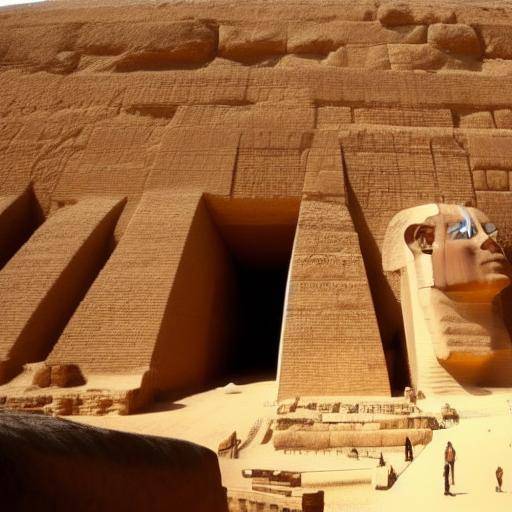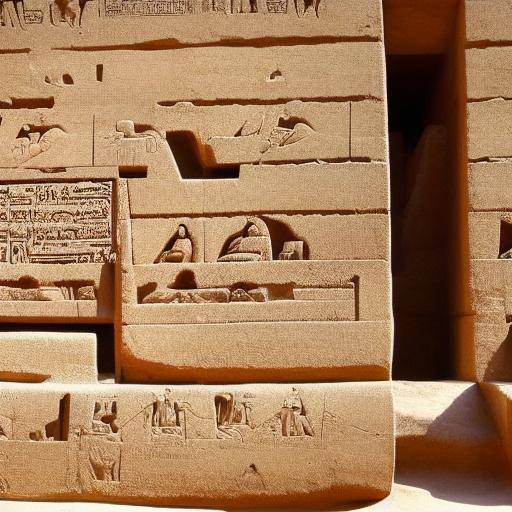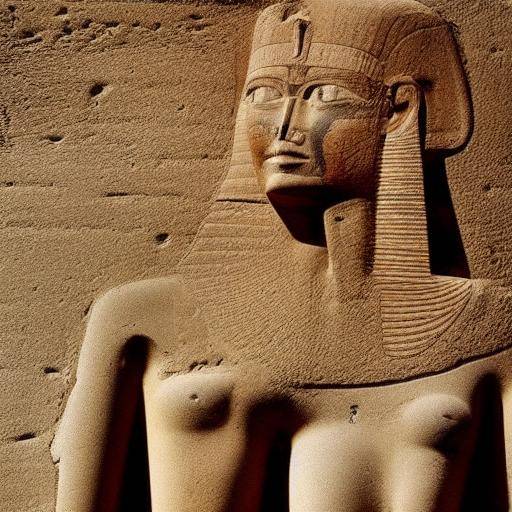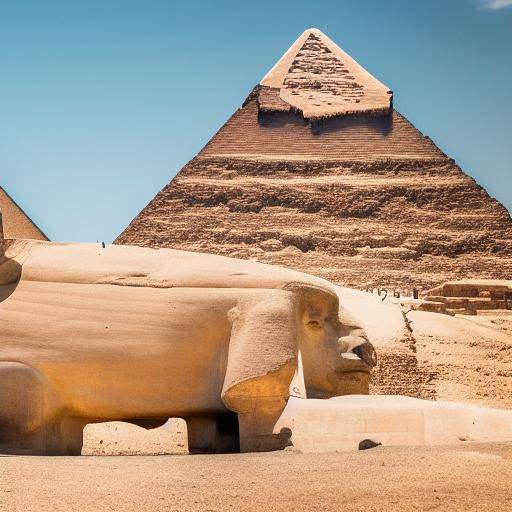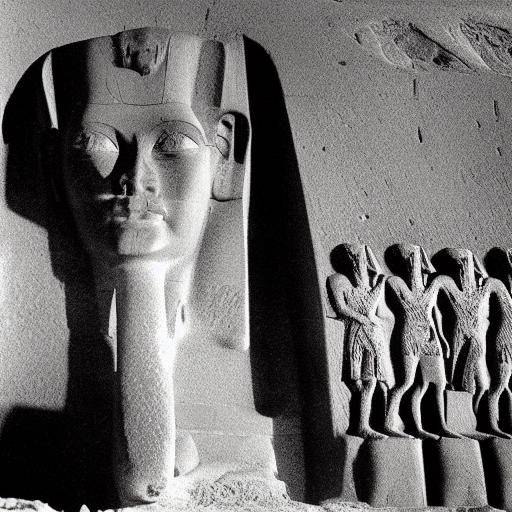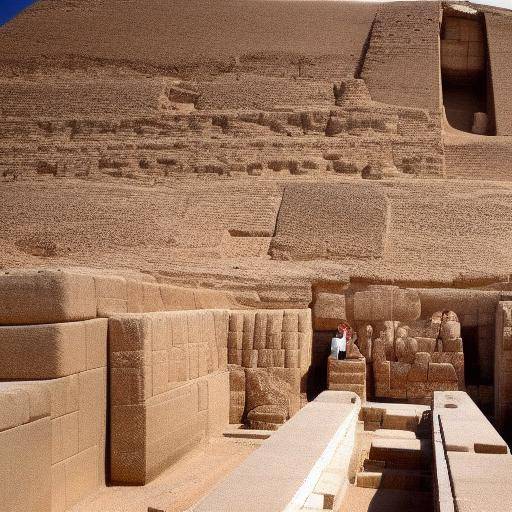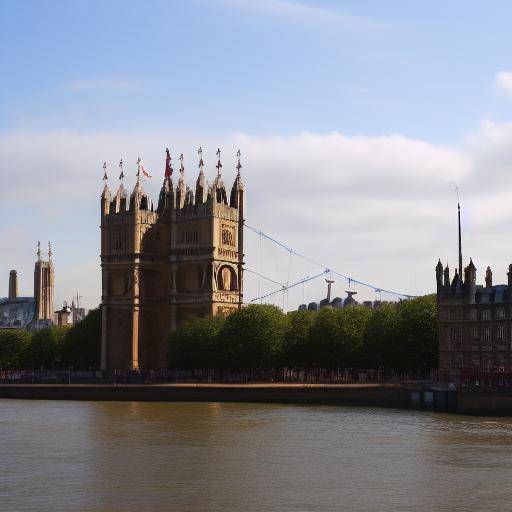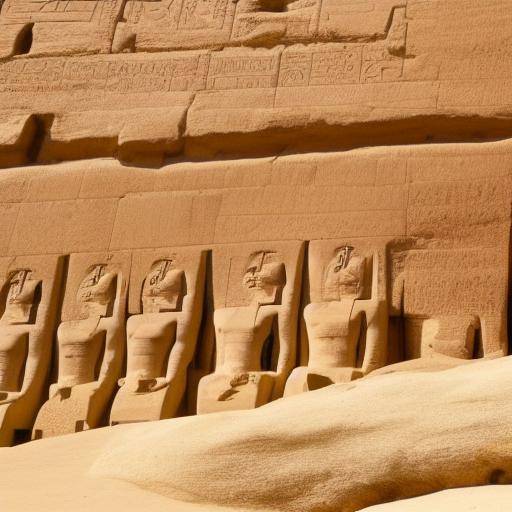
The Great Sphinx of Giza is one of the most emblematic architectural wonders in the world and attracts millions of tourists every year. Located in Egypt, it is a fascinating masterpiece that awakens the curiosity of travelers and lovers of history alike. If you're planning to visit this amazing place, it's crucial to be well prepared to enjoy the most of the experience. From its mysterious history to practical advice for an unforgettable visit, this guide aims to provide you with all the information you need to make the most of your visit to the Great Sphinx of Giza.
Introduction
Established in the vast plain of Giza, the Great Sphinx is a colossal figure sculpted in a single piece of limestone. With the head of a Pharaoh and the body of a lying lion, this majestic statue represents an iconic symbol of ancient Egyptian civilization. In fact, it is almost impossible to mention Egypt without evoking the imposing image of the Great Sphinx. Over the centuries, he has witnessed countless historical events and maintained his place as a powerful symbol of the greatness of ancient Egypt. In this article, you will enter into the rich history, cultural meanings and essential tips to enjoy to the maximum of your visit to this architectural wonder.
History and Background
Origins and Meaning
The origin of the Great Sphinx dates back to the reign of Pharaoh Khafre, who ordered its construction around 2500 BC. This colossal statue not only serves as a memorial, but it is also believed that it has deep religious and symbolic connotations that reflect the Egyptian worldview of the time. The half human figure and half animal is a vivid example of the fusion between human royalty and animal gods, a fundamental pillar of ancient Egyptian mythology.
Important Developments
Throughout history, the Great Sphinx has witnessed countless cultural and political transformations in Egypt. From the expansion of the Egyptian Empire to the arrival of foreign conquerors, through the erosion caused by natural elements, the statue has endured all the vicissitudes of time. Continuous conservation and restoration efforts have been crucial in preserving the majesty of the Great Sphinx for future generations.
Detailed Analysis
The Great Sphinx of Giza is more than a simple ancient sculpture; it is a lasting symbol of human ingenuity and a window to the rich cultural heritage of Egypt. His intricate design, which combines artistic skills with deep religious symbolism, has fascinated historians, archaeologists and curious equally. The sphinx has also been an enigma for researchers, as their exact purpose and precise meaning still awaken debates and speculations.
Analysis in Deep
Benefits and Challenges
The visit to the Great Sphinx of Giza offers a unique experience that can greatly enrich the personal understanding of ancient history and Egyptian culture. However, the large volume of visitors and environmental conditions can pose logistical and conservation challenges. It is crucial to address these challenges to ensure that the Great Sphinx remains accessible to future generations.
Current Practices and Trends
Current trends in cultural tourism have highlighted the importance of sustainably preserving and managing archaeological sites of global importance. The Great Sphinx is at a crossroads that balances the need for conservation with the demand for visitors. This balance is crucial to ensuring a valuable and meaningful experience for tourists without compromising the integrity of the site.
Comprehensive review
Applications and Best Practices
When planning a visit to the Great Sphinx, it is essential to follow the guidelines established to maintain conservation and respect for the site. Responsible tourism and support for local initiatives are practices that will help ensure that the Great Sphinx remains a memorable destination for future generations.
Outlook of Experts
Archaeology and conservation experts underline the importance of a balanced approach that promotes education and preservation while maximizing visitor experience. In addition, they highlight the need for concrete measures to mitigate the negative impacts of tourism on this historic site.
Comparative analysis
The Great Sphinx of Giza, together with the Great Pyramid of Giza and other surrounding structures, forms an exceptional set that has captured the imagination of generations. Its unique features and incomparable cultural legacy make it an incomparable tourist destination all over the world.
Practical Tips and Accessible Tips
When visiting the Great Sphinx of Giza, it is essential to be prepared to make the most of this unique experience. Here are some practical tips that will help you plan your visit effectively:
- Plan your visit in advance: The Great Sphinx attracts a great influx of visitors, so it is advisable to plan your visit in advance to avoid crowds and ensure a quieter experience.
- Hire a qualified tour guide: An expert knowledge guide will not only amplify your understanding of the site, but will also provide you with detailed historical and archaeological information.
- Suitable clothing: Due to high temperatures and intense sun, it is advisable to wear light clothing, hat and sunscreen for your comfort.
- Respect the environment: Be sure to follow the directions and rules set on the site to preserve its integrity and beauty.
Sectoral Information and Expert Reviews
The perspectives of experts in cultural tourism and historical heritage offer a valuable insight into the importance of sustainable conservation and responsible management of the Great Sphinx of Giza. In addition, they highlight the need to educate visitors about the rich history and cultural significance of the site to promote more respectful tourism.
Case Studies and Practical Applications
In exploring concrete examples of conservation and tourism management initiatives around the Great Sphinx, a deeper view of how the principles of preservation and sustainability are applied in practice. Case studies illustrate the diversity of approaches and challenges faced by those seeking to protect this historic treasure.
Future Trends and Predictions
The future of tourism in archaeological sites such as the Great Sphinx of Giza depends largely on the ability to effectively manage current challenges and adapt to the changing expectations of travelers. Advances in sustainable management and visitor education will play a crucial role in ensuring the long-term integrity of this emblematic site.
Conclusion
The Great Sphinx of Giza remains a lasting testimony of the ingenuity and creativity of ancient Egypt. Through understanding and respect for its history, we can ensure its preservation for future generations. By following these tips and fostering responsible cultural tourism, visitors can contribute to the lasting protection and legacy of this exceptional site.
Frequently asked questions
What is the best time of the year to visit the Great Sphinx?
The best time to visit the Great Sphinx is during the autumn and spring months, when temperatures are more moderate and the weather is more suitable for exploring the outdoor site.
Can you enter into the Great Sphinx?
No, it is not currently possible to enter the structure of the Great Sphinx. However, visitors can admire its imposing presence from the surrounding platform.
How long do you need to visit the Great Sphinx of Giza?
It is recommended to spend at least 1-2 hours for the visit, which allows you to calmly explore the surroundings, admire the statue and absorb the unique atmosphere of the place.
What are the conservation measures implemented on the site?
Conservation measures include maintenance programmes, regular inspections, erosion protection and public education on the importance of preserving the site.
Are there specialized tours that focus on the Great Sphinx and its surroundings?
Yes, many specialized tours offer guided tours that focus on the Great Sphinx, providing detailed information and an enriching experience.
What are the safety precautions that should be taken into account when visiting the Great Sphinx?
It is important to follow the safety guidelines and to respect the barriers and signals established on the site. In addition, staying hydrated and protecting from the sun is essential due to the warm climate of the region.
With these FAQs, we hope to have responded to some of your most common questions about visiting the Great Sphinx of Giza.
In short, visiting the Great Sphinx of Giza is an enriching experience that allows you to connect with ancient Egyptian civilization. By understanding their history, cultural significance and current challenges, visitors can fully appreciate the importance of preserving this iconic site. With proper planning and respect for the environment, each visit can contribute to safeguarding this wonder of the past for future generations.


